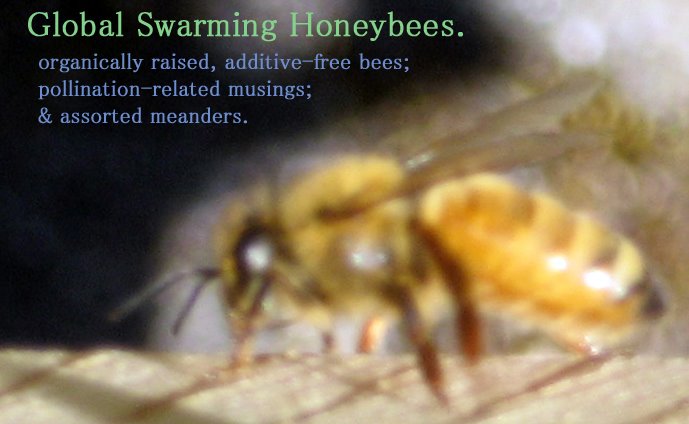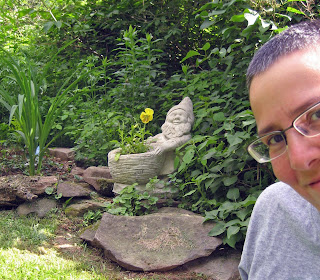Autumn has been gentle so far, with no hard frost as of yet and none predicted for the upcoming week. Though there's been significant die-back of the bees' forage plants, there are still a few decent stands of goldenrod and a great deal of aster to continue provisioning the bees for winter. The weather has been balmy and the bees have been foraging intensively in their continuing effort to pack away as much nectar and pollen for winter as they can. (My beekeeper mentors tellme a colony needs at least 60 pounds of honey to survive the winter; an inconceivable amount of work when you consider the size of a honeybee. Happily, all three of my hives appear to have attained the necessary stores.)
This weekend, I observed the bees foraging on borage, sunflower, black knapweed, ornamental (late-blooming) milkweed, zinnia, squash blossoms, and salvia, along with aster and goldenrod.
I was particularly intrigued to see a bee working the portulacas I planted early this summer near the front of the house. Though I have seen bees scope out these flowers throughout the summer (and occasionally collect dew drops from the petals), I've never seen a bee gather nectar or pollen from these plants—probably because better options abounded. But with the forage menu diminishing daily, this busy bee put aside any scruples she may have had about delving into the portulaca and literally immersed herself in the task, till she was dusted from head to tail with pollen.


10.01.2007
Portulaca Honeybee
Labels:
aster,
autumn,
borage,
goldenrod,
honeybee behavior,
pollen,
pollination,
portulaca,
zinnia
Subscribe to:
Post Comments (Atom)






2 comments:
Fantastic photos! Amazing definition! I guess you used a macro lens to capture these?
Pretty sure I just used a Canon Elph, which has a real nice macro. Thanks for your kind words about the photos, and for reading the blog.
Post a Comment